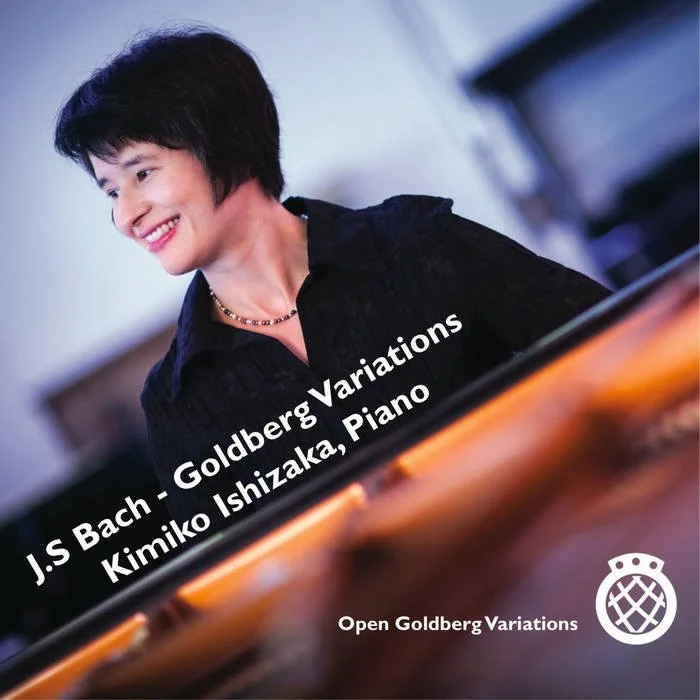 Today I had two visitors whom I was able to audition some music with. They'd been so good to go on an audition with to the hifi store several months ago, and this was the first opportunity for them both to hear what I had acquired. I picked and chose from a variety of music to show-off the equipment, but then something funny happened when I launched this CD by the King's Consort.
Today I had two visitors whom I was able to audition some music with. They'd been so good to go on an audition with to the hifi store several months ago, and this was the first opportunity for them both to hear what I had acquired. I picked and chose from a variety of music to show-off the equipment, but then something funny happened when I launched this CD by the King's Consort.
 My friend stopped reading. She had picked up a coffee table book while I was messing around with changing tracks on the iPad. But she actually put down the book. She also had two people staring at her.
"I have used this CD, actually, at every hifi shop I've ever visited. It's the first CD in my collection… certainly not the first CD I acquired, but since it is special to me, I gave it #1."
There was no reaction. Just a smile.
"So do you like this music?"
A quick nod confirmed it. Maybe it just wasn't me.
I never got to play any of the other versions of the first track I own. As it turned out, the piece in question is BWV 527. Looking at the Schmeider number, it's obvious this isn't really a trio sonata for oboe, violin, and continuo, right? It falls within Bach's organ oeuvre, and that is squarely what this piece was originally written for! So I began thinking about the piece. And the recordings.
And I'm dedicating this post to just the single trio sonata, BWV 527.
For those who do not know what a trio sonata is, let me break it down into simple terms.
It's a sonata, meaning, it's a type of musical form. The label kind of sets expectations for how it will be organized. Sonatas of the Italian variety may have come in multiple movements, sometimes depending if it was intended for church (da chiesa) or the chamber (da camera). Corelli established a 4-movement model, but Bach, here, adopts a 3-movement model. Like a concerto, they are organized fast-slow-fast. And because we're talking about Bach, the themes in the outer movements tend to be contrapuntal, meaning that the melodic phrases are played in all three parts.
Three is the operative word: a trio sonata doesn't refer to the number of movements, but the number of parts. A trio sonata has two melody lines and a bass line. On the organ, these would be left hand, right hand, and pedal. And that's why different combinations of instruments are represented in these recordings: they have been arranged with in different ways to maintain this three-part texture.
It is believed this piece was written only for organ. But Bach followed the form and the idiom so well for a keyboard instrument, that these renditions for other combinations of instruments just work. In the case of the KC recording, one upper part is taken by the oboe, the second by the violin, and the third by the basso continuo, which could be any combination of bass instruments, including organ, harpsichord, theory, etc.
My friend stopped reading. She had picked up a coffee table book while I was messing around with changing tracks on the iPad. But she actually put down the book. She also had two people staring at her.
"I have used this CD, actually, at every hifi shop I've ever visited. It's the first CD in my collection… certainly not the first CD I acquired, but since it is special to me, I gave it #1."
There was no reaction. Just a smile.
"So do you like this music?"
A quick nod confirmed it. Maybe it just wasn't me.
I never got to play any of the other versions of the first track I own. As it turned out, the piece in question is BWV 527. Looking at the Schmeider number, it's obvious this isn't really a trio sonata for oboe, violin, and continuo, right? It falls within Bach's organ oeuvre, and that is squarely what this piece was originally written for! So I began thinking about the piece. And the recordings.
And I'm dedicating this post to just the single trio sonata, BWV 527.
For those who do not know what a trio sonata is, let me break it down into simple terms.
It's a sonata, meaning, it's a type of musical form. The label kind of sets expectations for how it will be organized. Sonatas of the Italian variety may have come in multiple movements, sometimes depending if it was intended for church (da chiesa) or the chamber (da camera). Corelli established a 4-movement model, but Bach, here, adopts a 3-movement model. Like a concerto, they are organized fast-slow-fast. And because we're talking about Bach, the themes in the outer movements tend to be contrapuntal, meaning that the melodic phrases are played in all three parts.
Three is the operative word: a trio sonata doesn't refer to the number of movements, but the number of parts. A trio sonata has two melody lines and a bass line. On the organ, these would be left hand, right hand, and pedal. And that's why different combinations of instruments are represented in these recordings: they have been arranged with in different ways to maintain this three-part texture.
It is believed this piece was written only for organ. But Bach followed the form and the idiom so well for a keyboard instrument, that these renditions for other combinations of instruments just work. In the case of the KC recording, one upper part is taken by the oboe, the second by the violin, and the third by the basso continuo, which could be any combination of bass instruments, including organ, harpsichord, theory, etc.
 It wasn't that long ago that I reposted thoughts on the Palladian Ensemble's contribution. This recording joined my collection later, with my hope that there had to be more than what the King's Consort was doing with those pieces. While there are elements to enjoy in the Palladian recording, it never gets the play that my first recording gets.
Part of the reason is the richness of the instruments employed. Recorder and violin simply can't compare to the more sensual, supple instruments used in the Hyperion recording. One is bright and astringent, the other is dark and luxurious. And to be fair, it isn't just the instruments. The Hyperion recording enjoys what some call the "Hyperion sound." It's a better engineered recording and the acoustic in the King's Consort disc favors the instruments and the music more.
It wasn't that long ago that I reposted thoughts on the Palladian Ensemble's contribution. This recording joined my collection later, with my hope that there had to be more than what the King's Consort was doing with those pieces. While there are elements to enjoy in the Palladian recording, it never gets the play that my first recording gets.
Part of the reason is the richness of the instruments employed. Recorder and violin simply can't compare to the more sensual, supple instruments used in the Hyperion recording. One is bright and astringent, the other is dark and luxurious. And to be fair, it isn't just the instruments. The Hyperion recording enjoys what some call the "Hyperion sound." It's a better engineered recording and the acoustic in the King's Consort disc favors the instruments and the music more.
 Then I turned to one of the "original" versions, and my favorite Bach organist, Ton Koopman. He recorded these as part of his project for Teldec and his rendition of BWV 527 is filled with the bubbly baroqueness that others might call keyboard flamboyance. I like it. My only reservation is the slow tempo for the first movement. Bach purposefully chose a slower marking (Andante versus Presto), and Koopman's choice does support some of what he adds in terms of finger filigree. But perfection for me would have been just a few hairs faster.
The organ rendition is nice, but it can't compare to the texture and color found in the King's Consort rendition.
Then I turned to one of the "original" versions, and my favorite Bach organist, Ton Koopman. He recorded these as part of his project for Teldec and his rendition of BWV 527 is filled with the bubbly baroqueness that others might call keyboard flamboyance. I like it. My only reservation is the slow tempo for the first movement. Bach purposefully chose a slower marking (Andante versus Presto), and Koopman's choice does support some of what he adds in terms of finger filigree. But perfection for me would have been just a few hairs faster.
The organ rendition is nice, but it can't compare to the texture and color found in the King's Consort rendition.
 Lest you think no one can touch the King's Consort, let's not forget that the Rare Fruits Council recorded this trio sonata among a few others in this release some years ago, now. I too love this recording, and compared to the KC, the RFC employs an all string band. Their opener is athletic and downright fast. Koopman slow on the left, sprinters RFC on the right. I can live with it, just as I can live with Koopman's tempo choice, but ultimately the answer is somewhere in the middle.
Lest you think no one can touch the King's Consort, let's not forget that the Rare Fruits Council recorded this trio sonata among a few others in this release some years ago, now. I too love this recording, and compared to the KC, the RFC employs an all string band. Their opener is athletic and downright fast. Koopman slow on the left, sprinters RFC on the right. I can live with it, just as I can live with Koopman's tempo choice, but ultimately the answer is somewhere in the middle.
 London Baroque too takes on BWV 527 in their collection, like the RFC, using strings. The "live" nature of the recording requires a lower volume on the hifi; it's a well-meaning performance, but it lacks the confidence among all the players that the RFC brings, and likewise, the sensual, comfortable sound world of the King's Consort. Nice try.
London Baroque too takes on BWV 527 in their collection, like the RFC, using strings. The "live" nature of the recording requires a lower volume on the hifi; it's a well-meaning performance, but it lacks the confidence among all the players that the RFC brings, and likewise, the sensual, comfortable sound world of the King's Consort. Nice try.
 For something even more interesting that strings and woodwinds, I once tried this recording of the same works on guitar and harpsichord. On one level, it's an odd combination, but somehow, the sensitivity of the players and their obvious love for the music earned my appreciation. It's a nice alternative to the others, and the tempi chosen are all quite reasonable, middle-of-the-road approaches.
In the end, I enjoyed hearing the different facets of one of Bach's six trio sonatas for organ. While I love BWV 527 from the middle of the collection, the truth is, they all have merit. But for me, this one some how summarizes the set and epitomizes my memory for the collection. The music is of such a high quality that you can't hardly go wrong -- so there's always reason to have multiple versions at bay. If this piece, or the collection is new to you (as it was to my friend today), seek it out. There are treasures within.
I came to enjoy this discussion about the sonatas via the J. S. Bach Cantatas website. And incidentally, do I have a favorite? Yes, if it wasn't already clear, the King's Consort version is still my favorite--both for BWV 527 and the complete set.
For something even more interesting that strings and woodwinds, I once tried this recording of the same works on guitar and harpsichord. On one level, it's an odd combination, but somehow, the sensitivity of the players and their obvious love for the music earned my appreciation. It's a nice alternative to the others, and the tempi chosen are all quite reasonable, middle-of-the-road approaches.
In the end, I enjoyed hearing the different facets of one of Bach's six trio sonatas for organ. While I love BWV 527 from the middle of the collection, the truth is, they all have merit. But for me, this one some how summarizes the set and epitomizes my memory for the collection. The music is of such a high quality that you can't hardly go wrong -- so there's always reason to have multiple versions at bay. If this piece, or the collection is new to you (as it was to my friend today), seek it out. There are treasures within.
I came to enjoy this discussion about the sonatas via the J. S. Bach Cantatas website. And incidentally, do I have a favorite? Yes, if it wasn't already clear, the King's Consort version is still my favorite--both for BWV 527 and the complete set.
I love music.
I write about the music I like and have purchased for the benefit of better understanding it and sharing my preferences with others.


